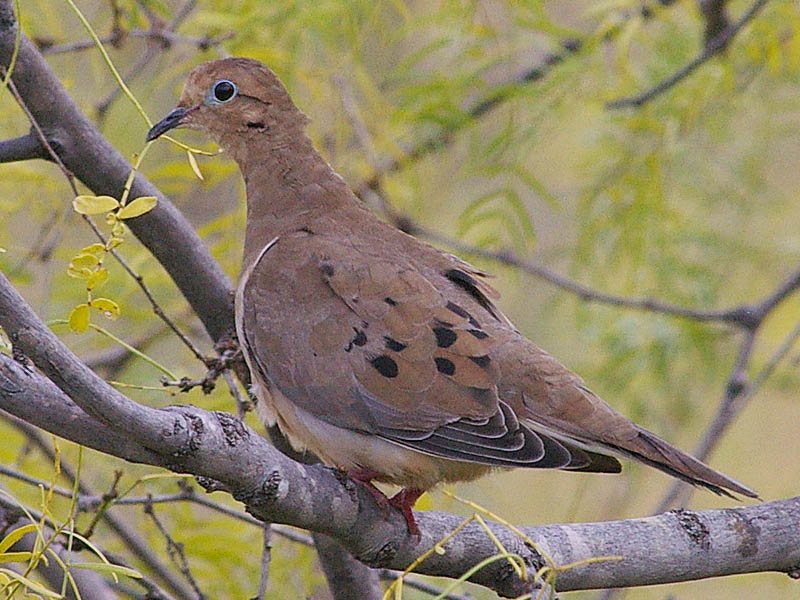

Not just a dove, as one might recognize a hoot as belonging to an owl, or a quack as belonging to a duck, but the cooing song of a mourning dove. This is probably the most widely recognized bird sound on the continent, the one for which more humans could summon up the exact species name of the singer than for any other, given the bird’s evocative title. Or, in the case of a cooing mourning dove, a longing that is unusually tinged with pathos. Cooing suggests an affection that is supremely gentle, sometimes to the point of cloying forcelessness.

Since doves are technically outside of the passerine or “songbird” group, and since their songs are quite different from the high-pitched and often elaborate whistles of our most well-known singers, you will sometimes see this vocalization misleadingly referred to as a call, or technically as a “perch coo.” Cooing, of course, is not inherently a technical word, but a popular one, one that immediately conveys a whole host of connotations to a general public that is often indifferent to the voices of birds. This is their song, their central act of courtship. But in the case of the mourning dove, what almost everyone seems to hear is melancholy and yearning.Īlso invisible but invariably present at some indefinable distance are the mourning doves whose plaintive call suggests irresistibly a kind of seeking-out, the attempt by separated souls to restore a lost communion. With different birds, different people may hear different things, form varying impressions. There are appearances, there are the habits of one’s day, and there are the actions of one’s life, but few aspects of a bird or person make as indelible an impact as a voice. When it comes to mourning doves, the world agrees with my usual instinct: the most essential thing to do is listen.


 0 kommentar(er)
0 kommentar(er)
